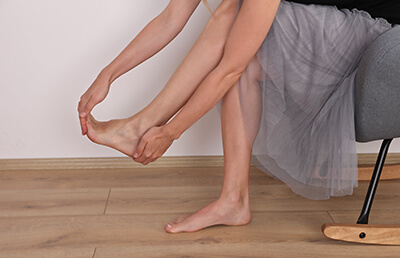

Pain in the feet? It sounds like something that only happens to other people. But what if this pain is caused by Plantar Fasciitis? The symptoms, causes and treatments of Plantar Fasciitis are all discussed below!
The plantar fascia is a thick band of tissue that runs from the heel to the toes in each foot. The plantar fascia supports and maintains the arch when walking, as well as absorbing shock during standing or running. However, if an individual has Plantar Fasciitis then they can experience pain on their feet due to inflammation.
Plantar fasciitis is caused by inflammation of the plantar fascia. What causes this inflammation? There are a few factors that can cause plantar fasciitis, including:
- Improper or prolonged standing on hard surfaces
- Running for an extended period of time (either too much mileage or not enough recovery)
- Wearing shoes with poor arch supports
Plantar Fasciitis can cause a variety of symptoms in the region of the foot. These could include:
- Pain in the heel or arch of foot
- Stiffness, aching, and burning sensation on the bottom of your foot when standing up
- Tingling feeling that goes up into your leg from the ball of your feet. The pain increases with pressure applied to the plantar fascia.
Once you are aware that you have this condition, there are things that you can do to improve or resolve the symptoms.. The first thing to do is take some time off from the activities that caused plantar fasciitis and then gradually reintroduce them. If you are weight-bearing on your foot, then stretches for plantar fascia can help alleviate pain.
There are three stretches that you can perform to improve plantar fasciitis.
The first stretch is a calf stretch. To perform this plantar fasciitis stretch, get on your hands and knees in the push-up position with your toes pointed up towards you buttock. Slowly lower one leg so that it is flat on the ground. Allow yourself to lean forward until there's tension in your calves. Don't bounce, just create a slow stretch.
The second stretch is the plantar flexion stretch. This stretch is another way to help you resolve the issue. You can perform this stretch by sitting on the edge of a chair or bench with your toes pointed towards you. Allow your heels to point back so that they are off the surface and grab them, pulling them up until you feel tension in your plantar fascia.
This last stretch is called an Achilles tendon stretch. The Achilles tendon is the large tendon on the back of your ankle and foot. You can perform this stretch by standing on the edge of a step or stair and then leaning your body over. Allow your heel to lower down towards the ground, while you pull up with that foot so it’s not bearing any weight. This is another one that might feel intense at first as you will be stretching out some tight muscles.
Perform all of these stretches very slowly. Never bounce.
When you’re done with your stretches, make sure to ice down the plantar fascia. Your feet will thank you for it!
Custom molder orthotics are a great way to alleviate the symptoms of plantar fasciitis. Orthotics are best for those with chronic plantar fascia pain du to altered biomechanics of the feet, and they can be put into any type of shoes or worn as inserts to take some pressure off your feet while you’re walking around.
Once your feet are evaluated by a professional, they can determine the correct type of orthotic that will be best for you. Flexible orthotics are important for those with plantar fasciitis, and they can help support your feet while you’re standing or walking. These orthotics are great for people who need a thinner profile so that their feet don’t get sore from too much pressure on them.
Cold laser therapy uses specific wavelengths of light that is contained in a treatment wand that is used on the affected area. Cold lasers are known for their ability to reduce inflammation and increase blood flow, which lead to pain relief.
Cold Laser therapy can be used on plantar fasciitis by applying it directly over the location of the tight band of tissue found just below your heel.
Cold laser therapy is a treatment that does not involve medication or surgery, making it an attractive choice for some patients who are looking to avoid the risks and side effects of pharmaceuticals or invasive procedures.